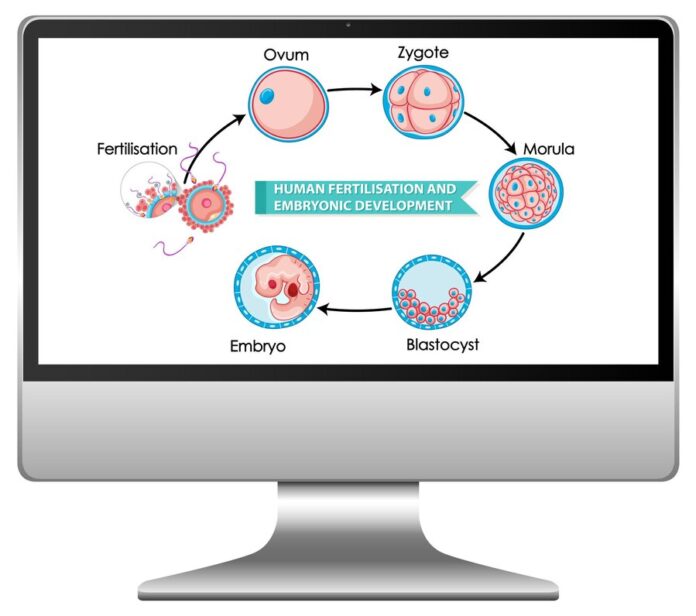ART Guides and Insights
Assisted Reproductive Technology (ART) refers to a group of medical procedures aimed at addressing infertility and enabling individuals and couples to conceive. ART encompasses a variety of techniques, including in vitro fertilization (IVF), gamete intrafallopian transfer (GIFT), and intracytoplasmic sperm injection (ICSI). With advancements in reproductive medicine, the demand for comprehensive resources on ART has grown significantly. This article explores the key aspects of ART books, including FAQs, comparisons, differences and similarities among techniques, and market insights.
What is an Assisted Reproductive Technology Book?
An Assisted Reproductive Technology book serves as an educational resource for medical professionals, patients, and researchers. These books provide detailed information about the science, procedures, ethical considerations, and outcomes of ART. They often include:
- Overview of ART Techniques: Detailed descriptions of various procedures, their indications, and success rates.
- Case Studies: Real-life examples to provide context and practical insights.
- Ethical and Legal Aspects: Discussion on the societal and legal implications of ART.
- Patient Guidance: Step-by-step explanations and advice for individuals considering ART.
- Market Trends: Analysis of the global ART industry, including costs and technological advancements.
Comparisons of ART Techniques
| Technique | Description | Success Rate | Average Cost (USD) |
|---|---|---|---|
| In Vitro Fertilization (IVF) | Fertilization of an egg with sperm outside the body and implantation in the uterus. | 40-50% (varies by age) | $12,000 – $15,000 per cycle |
| Intracytoplasmic Sperm Injection (ICSI) | Injection of a single sperm into an egg to aid fertilization, used in cases of male infertility. | Similar to IVF | $1,000 – $2,000 (added to IVF cost) |
| Gamete Intrafallopian Transfer (GIFT) | Transfer of eggs and sperm into the fallopian tube for natural fertilization. | 25-30% | $15,000 – $20,000 per cycle |
| Zygote Intrafallopian Transfer (ZIFT) | Transfer of a fertilized egg (zygote) into the fallopian tube. | 25-35% | $15,000 – $25,000 per cycle |
Similarities and Differences
Similarities Among ART Techniques
- Purpose: All ART methods aim to overcome infertility and enable conception.
- Specialized Equipment: Each procedure involves advanced medical technologies and trained specialists.
- Hormonal Stimulation: Most ART techniques require ovarian stimulation to retrieve multiple eggs.
- Ethical Considerations: Ethical concerns, such as embryo freezing and selective reduction, are common across techniques.
Differences Among ART Techniques
- Methodology: IVF involves fertilization in a laboratory, while GIFT and ZIFT require procedures closer to natural fertilization.
- Suitability: Techniques like ICSI are tailored for specific conditions, such as male infertility.
- Success Rates: IVF generally offers higher success rates compared to GIFT and ZIFT.
- Cost: The expenses vary significantly depending on the complexity and additional treatments required.
Market Value and Trends
The global ART market is experiencing exponential growth due to increasing infertility rates, advancements in medical technologies, and growing social acceptance of these procedures. Here’s an overview:
| Region | Market Value (2023) | CAGR (2023-2030) | Key Drivers |
| North America | $6.2 billion | 7.5% | High awareness, advanced facilities, and insurance coverage. |
| Europe | $5.8 billion | 6.8% | Favorable regulations and government support. |
| Asia-Pacific | $4.5 billion | 9.2% | Rising infertility rates and medical tourism. |
| Rest of the World | $2.1 billion | 6.0% | Emerging markets with improving healthcare infrastructure. |
Expenses Breakdown
The cost of ART varies depending on the procedure, region, and additional treatments. Below is a general breakdown:
| Expense Category | Approximate Cost (USD) |
| Ovarian Stimulation Medications | $3,000 – $5,000 |
| IVF Procedure | $12,000 – $15,000 |
| ICSI (Add-on to IVF) | $1,000 – $2,000 |
| Embryo Freezing and Storage | $500 – $1,000 annually |
| Preimplantation Genetic Testing (PGT) | $3,000 – $5,000 |
FAQs About Assisted Reproductive Technology Books
1. Who should read an ART book?
ART books are valuable for:
- Medical Professionals: Doctors and embryologists seeking in-depth knowledge.
- Students: Medical and nursing students specializing in reproductive health.
- Patients: Individuals and couples exploring fertility treatment options.
- Researchers: Those involved in reproductive medicine studies.
2. What are the key features of a good ART book?
A comprehensive ART book should include:
- Clear explanations of procedures and their outcomes.
- Case studies for practical understanding.
- Updates on the latest advancements in ART.
- Ethical and legal discussions.
- Guidance for patients on choosing the right treatment.
3. Are ART books expensive?
The cost of ART books varies widely. While patient-oriented books may range from $20 to $50, academic and professional texts can cost $100 or more due to their detailed content and specialized nature.
4. How can ART books help patients?
ART books provide patients with:
- A better understanding of their treatment options.
- Guidance on preparing for procedures.
- Insights into potential risks and success rates.
5. Are there digital versions of ART books?
Yes, many ART books are available as e-books, making them more accessible and often more affordable.
Conclusion
Assisted Reproductive Technology books are indispensable resources for anyone interested in understanding the intricacies of fertility treatments. By comparing techniques, analyzing market trends, and addressing FAQs, these books provide valuable knowledge for medical professionals, patients, and researchers alike. With the growing prevalence of infertility and advancements in technology, the ART industry and its accompanying literature are poised for continued growth and innovation.
